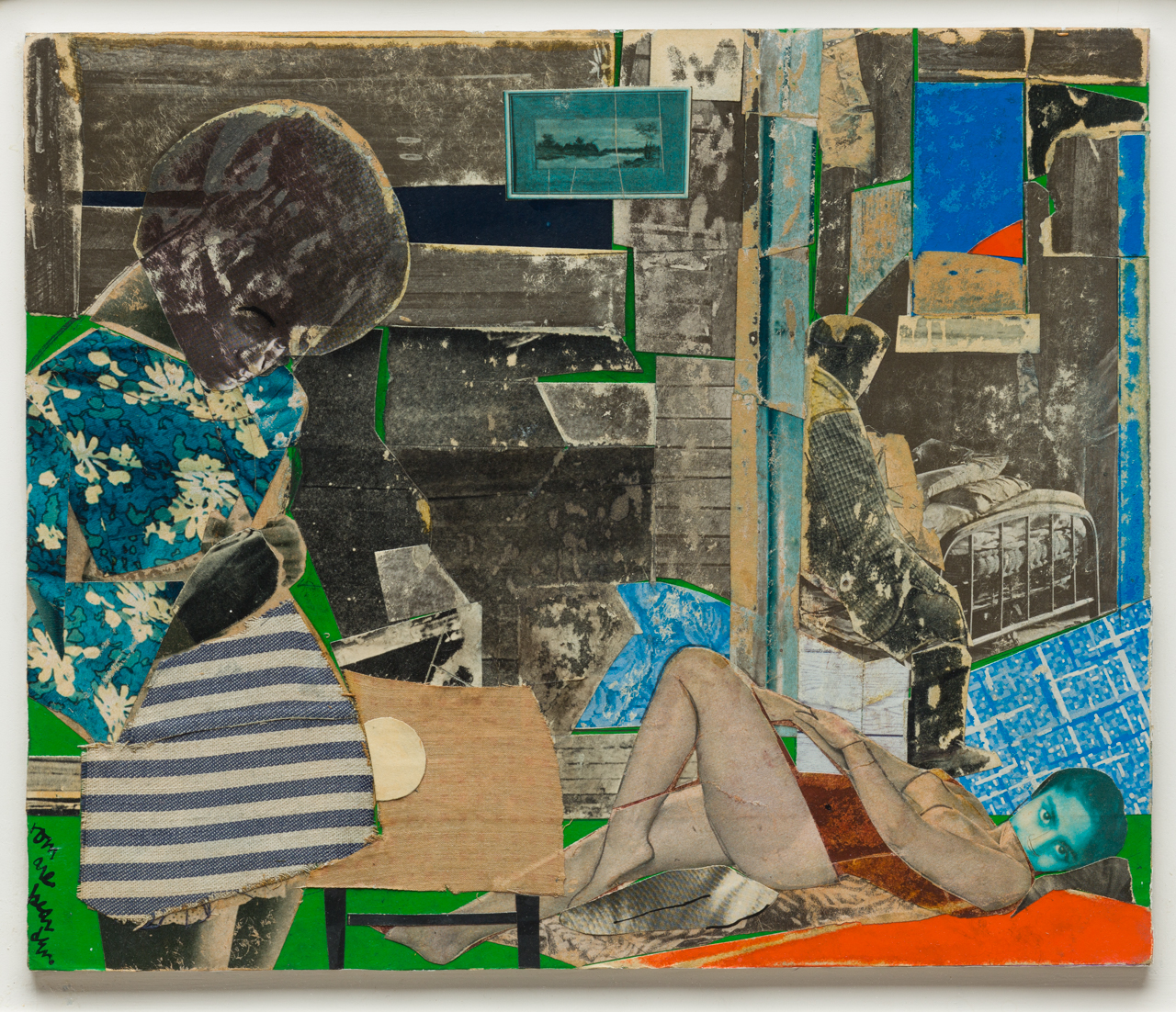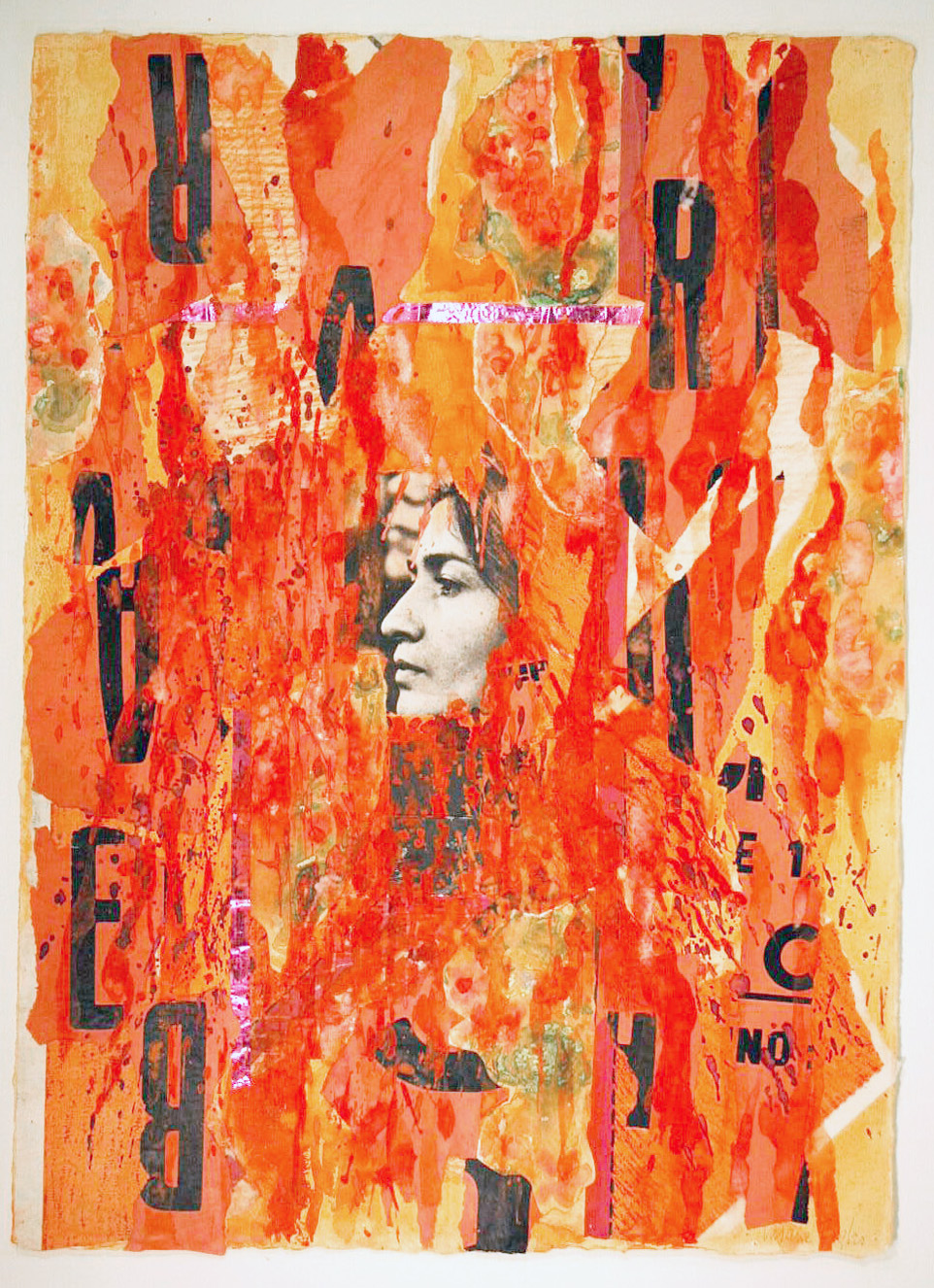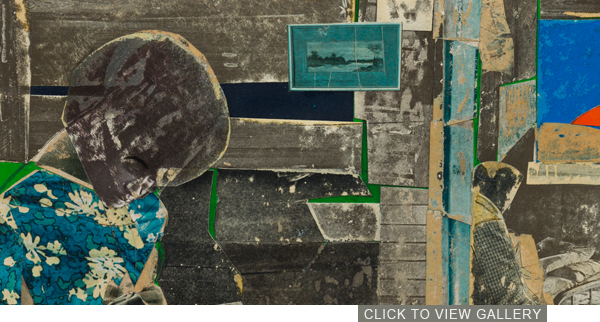Constructing Identity
The mind of an artist is sublimely intriguing. They can portray what they see and think through their art. Viewers are then able to examine and experience important issues such as race, gender, religion, and politics, through the artist's work. There is a natural connection that each artist makes between making the art, the use of their material, and formulating an identity. When making art, artists have explored a variety of different mediums, techniques, as well as research to accomplish what they are trying to express. Establishing self-identity is an important part of art-making. Constructing a collage is similar to formulating an identity, in which there is also a process of selecting, arranging, and organizing given material to represent an idea.
Early 20th century Dada artists abandoned traditional art materials and the role of artists. They embraced the use of photographs, re-engineering, and re-assembling them to create powerful avant-garde works of art. Dada artists worked in collage, photomontage, and found-object construction, rather than in painting and sculpture. Raoul Hausman (1886-1971), an Austrian artist, and a founder and central figure of the Dada movement in Berlin, is a prime example of an artist whose experimental photographic collages had a profound influence on the European Avant-Garde. Hausman developed photomontage as a tool of satire and political protest.
Photomontage is one technique used in developing a collage that clearly pieces together images to explore ways of creating an identity. This process is done by cutting, gluing, rearranging, and overlapping two or more photographs into a new image. Sometimes the resulting composite image is photographed so that the final image may appear as a seamless physical print. An African American artist by the name of Romare Bearden (1911-1988) was able to accomplish this technique in a large number of his pieces.
Romare Bearden is recognized as being one of the most creative visual artists of the 20th century. Bearden was surrounded by some of the most influential artists and writers during this time, who were part of the Harlem Renaissance. Bearden skillfully blends personal memories, cultural history and literature to create his highly unique, and personal work.

Bequest of Michael Tolan, 2011.
In Sunday Morning, Bearden uses his method of collage to illustrate cultural identity. The black community in America is often illustrated with images of the people being poor or of lower-class. Bearden carefully illustrates the living conditions that one may have seen in the black community during his childhood. The scene in the background sets the tone for the remaining images in the foreground. The living space implies that the character images are poor or of lower-class status. The space comes off as being run down by the open spaces in the wooden plates on the walls. The furniture such as the bed, front coffee table and picture hanging on the wall gives it a sense that this place is occupied by a family or group of families. Regardless of their living situation, the front form is getting dressed in possibly her "Sunday best." This term has been used in the black community as it pertains to clothing for Sunday church service. The character in the back solemnly seems to be waiting to leave and the other two images (one on the floor and one in the bed) seem to dismiss the significance of the day. Going to church is an integral part of the black community. For some, it was the only place where one would go to get dressed up. Even though these were not Bearden's personal living conditions, he identifies with this piece because these are just a few of the daily images he may have seen while growing up as a young black man.
Bearden's compositions are built using pieces of faces and bodies, limbs, and clothing that mimicked the rhythm of jazz music. Bearden portrayed subjects that reflected his personal experiences in a world with which he identifies. Throughout his career, African American experiences remained to be the most important part of his work.

1979, lithograph in color, 22 x 16 in. (55.9 x 40.6 cm)
Gift of Ronald Stone, 1980
Throughout Bearden's career, the beauty and dignity of the black women was a central motif. This is shown in this lithograph titled In the Garden with the central woman is in her garden, picking flowers. Bearden transfers his use of collage imagery into lithography. A collage is a single image and a lithograph can be made into multiple images. The figure's feet are bare and her dress is torn. This once again addresses the conditions of the poor black community in American. Gardening is considered as a hobby that is rather relaxing and a skill that could take your mind to another place. When looking at the picture you see the image is surrounded by beauty. Beautiful flowers, perfect weather, no better time than to relax and tend to your garden. It may be implied that she may have been in a lower social class because of her dress. She might be of lower-class status, but this joyful woman wears her Sunday hat and is showing off her jewelry and possibly praising her hand to the Lord for her beautiful blessings. She may not have much, but she is still joyful and can relax on this perfect day and tend to her garden. Even though Bearden was not a woman, he could identify with this central figure because she represents a woman who struggled but still has a sense of joy and happiness in her heart. He was able to identify with her lifestyle even though he did not personally live a life similar to the image he was portraying. Bearden came from a family where his mother was an activist which meant she probably would have educated him about the circumstances of black people.

Gift of Michael Tolan, 2008.
In The Baptism the faces and hands are a focal point in this collage of someone being baptized, a religious ceremony is done by the Christian community to cleanse your body of sins. The hands are made from various magazine sources with the use of different colors, sizes, and textures to capture the viewer's attention. Bearden admired the beauty of African masks and statues. He felt connected to African art, especially during the 1960s when the civil rights and black pride movements engaged American society. When growing up, river baptism was common in the south, particularly among the rural black communities. Several African religions also use this religious ceremony to cleanse both the body and the soul. Once again Bearden put a reference to religious beliefs, which is part of his identity.

30.25 x 22 in. (76.8 x 55.9 cm). Gift of the artist.
Mary Jane Bigler (1909-1995) an important Detroit, Michigan artist who served on the faculty of Wayne State University approaches the technique of collage in a different way than Romare Bearden. With his personal references steaming from the Black culture in a variety of different ways, Bigler's work is a reflection of the women's movement. The piece titled Diva comes off as being a representation of female empowerment. She uses her materials differently than Bearden. Bigler is showing us the perspective of women and women's liberation.
This piece was created during a time of social unrest and protests against the Vietnam war, civil rights, and women's inequality. When I look at the central image of a woman surrounded by flames, this specific piece speaks to me as a woman. The orange flames with the red blood splatter to me symbolizes the violence and discrimination surrounded by women. The central figure seems to be drowning in the flames, but her face does not show any expression of panic or fear, but attentive to her surroundings. The bold black individual text displayed strategically around the figure represents different individuals; different women. Women of different races and cultures. Each letter is different and just like every woman is not the same. Some of the individual letters seem to have been sucked into the flames while others might be escaping. The artist identifies with the piece because she is a woman and women are strong and resilient. They may have experienced discrimination in their lives and have been exposed to violence but they are strong.

18 x 14 in. (45.7 x 35.6 cm). Bequest of James Pearson Duffy, 2015.
In a nonfigurative way, Beverly Fishman uses the DNA structure to represent the fundamental aspects of the human makeup in her piece from 1990-1991, Untitled. Culture, race, or gender is not specified in this particular piece. When you look at this piece you get an understanding that she is referencing the human body. She is not being specific to what we look like on the inside, but what ingredients are needed to construct a human. The identity in this piece is that we are all made up of the same things. We as humans, no matter our race or gender, all have a DNA structure and cells. No one strand is the same. Each one in every human is different, though we are the same…in the end. We all carry a hereditary material that contains our genetic code.

76 x 48 in. (193 x 121.9 cm).
Gift of James Pearson Duffy, 1994.
The artist by the name Kenneth Bowman uses found materials such and paper and fabric to adhere to his canvas. In his piece titled Three Hunters, you can plainly see that the artist has adhered fabric onto his figures to make it appear that they are wearing actual clothing. This technique is similar to another artist by the name of Benny Andrews. In this piece, hunting seems to have worn down these three characters. The artist has put three generations of men who are up to the challenge of hunting game but may have failed miserably. No bullets are left in the belt, the tattered clothing from spending long hours in the forest, and exhausted looks on their faces as if they have been out in the trenches for quite some time but with no reward. Possibly awaiting the disappointed faces of their families once they return home. The artist identifies with this piece through his choice of clothing in terms of the way the men are dressed; which could be a depiction of the actual clothing that the hunters wore in real life. The use of fabric is an important aspect of this piece. It is not clear why Bowman used fabric, but it resembles a process similar to quilting and putting together memories. Bowman not only identifies with the figures in his piece but also with the fabrics that he has chosen to use. The figures represent generations of men gathering together hunting game and the fabrics may be the actual clothing that was worn during this activity.
Artists have not only been known to capture their personal experiences in their work, but also explore the complexities of race, religion, sex, and politics. In a search for new ways to explore personal and cultural identities, the use of materials and artistic techniques (such as collage) are how artists produce the most innovative approaches, and meaningful exploration, on the subject of identity.
By Shelley Brinkley, undergraduate student, 2020.
Educational Activity: Constructing Identity
The University Art Collection provides Wayne State University Art, Art History and Arts Administration students direct experience in research, writing and career development opportunities in collections management through the curation of online exhibitions and the development of educational activities using works from the permanent collection.
